Tips
The secrets of successful brand awareness surveys
Tips for building a beautiful experience and getting the feedback you need.<br>

Let’s try something. If I say “tissues,” what company comes to mind? What about “cola,” or “tablet,” or “fast food?” What just popped into your head? Brands, logos, and products. Companies are now circling your head like little branding rock stars. Wait, what just happened?
Top of mind awareness. The marketing gold standard that makes brands bounce inside your cranium the moment you drop a name. This is what you want. And here’s how to get it by using a brand awareness survey.
Glue people to the process
Brand awareness points to how many people within your target market are truly aware of your presence, or if you’re even targeting the right people in the first place. And all this matters because—ding ding—awareness can drive sales.
“That’s all great,” you say. “But brand awareness surveys are annoying, long, and people hate doing them.” Well, things have changed. We’ve entered the age of the immersive survey experience, where respondents can now express themselves more naturally.
Try this one out to see what we mean:
Next-gen surveys mean better completion rates, cleaner data, and insights that can create a crystal-clear snapshot of where your brand stands in your customers’ psyche.
Then what? You contend for the worldwide heavyweight title of Top of Mind Brand. You seize the glory. You see it, believe it, taste it. Because aren’t you curious to know what glory tastes like?
Choose the right respondents
Unless you’re some enormous brand like Nike, a survey aimed at the general population is going to be irrelevant. Your marketing efforts probably aren’t “Nike size” in terms of target group, so your survey won’t end up informing your promotion.
Instead, sample people that you’re already targeting with advertising. This will help you understand whether your ads are working. One trick is to start every survey with personal questions to determine your brand’s demographics.
Demographics, demographics, demographics! These categories let you see whether you’re popular with senior citizens, teenagers, rural residents, suburban big-shots, whoever. From there, you can create the segments you need and start polling for awareness.
The brand awareness business calls this audience profiling. It’s just a way to understand your audience’s identity. This can be as large as 50,000 people or as small as 50. It all depends on your brand and your goal.
Let’s say you’re surveying online sneaker customers:
You could begin with:
If the respondent answers yes, follow-up with:
List your brand next to its competitors.
Then towards the end of the survey, you can politely ask more personal demographic survey questions:
Once you know your ideal customer, you can dive deeper by creating a brand awareness survey that matches your target audience. Then you can really find out if your messaging is working.
David Slatter, president of ExperiPro, goes further into the process:
Make it feel fun
We live in an age where the average attention span has sunk below the level of the humble goldfish. So keeping people glued to a single task—and away from digital distractions—has become a precious work of art.
Too often, online surveys present you with a single, never-ending screen of material. Think of a marathon. If you could foresee every step you had to take, would you ever start a race?
Best practice points to one question per screen. Known as “paging,” this process cuts surveys into sections—allowing questions to hold attention spans, one screen at a time. By breaking information into steps, respondents provide better data.
Treat the respondent’s time like a precious commodity, or they’ll bounce. Use visuals instead of plain text whenever you can. Pose questions in a friendly, conversational tone to make people feel comfortable. Just like any other form of communication, variety and economy of words will always win the day.
Matthew Mercuri, Digital Marketing Manager at Dupray offers the following advice:
- Humor kills. If you open your survey with an industry-related joke that gets a few chuckles, certain individuals will be better engaged right from the start.
- People love GIFs. Tie them to your survey, and you’ll clear some individuals from thinking of a hard reset on questions.
- Be succinct. Say and ask quickly, but provide people with the opportunity to read more if they want additional info.
Learn to use unaided and aided questions
There are two types of questions you can use in your brand awareness survey: unaided and aided. Both have their strengths, and both can boost your chances of obtaining quality responses from participants when used in the proper context. Here’s how they work.
No helping hand: unaided questions
If your brand’s been around for a while, and you feel confident that your audience has a faint idea of who you are, go for unaided questions. Great for measuring top of mind status, the process asks customers about the products they recall when quizzed on different categories.
A typical unaided question for an Advil campaign could be:
Participants are given the full freedom to reply whatever they like. Once data has been collected, hypothetical results for Advil could include:
- 20% of respondents think of Advil when they are in pain, while 60% recalled Tylenol.
- After compiling all data, we found that Advil is one of the top three brands in the pain relief category.
But to get a more complete picture, it’s also important to measure the width of brand recall—the specific cues that lead to the recall.
To learn more about these cues, Advil’s survey could also ask about brand subcategories:
Consumption preferences:
Or places of purchase:
One last word of advice: brand awareness survey results are never 100 percent accurate. As Alex Kemmler from Aiwa explains:
Here’s a clue: aided questions
Aided questions are a little different. They ask cued questions that are specific to a particular brand.
You can include rating scales:
Or open-ended questions:
So what’s the best way to combine aided and unaided questions? We asked Digital Brand & Marketing Consultant Julia Laguarda and here’s what she said:
Following up with strong marketing is also key:
Design for completion
Once you’ve got your questions, you’ll need to consider your survey’s design.
Your goal is to create a seamless user experience (UX). A process that brings in both quality responses and a high completion rate.
Julia agrees:
Here’s a few more tips to keep in mind.
Don’t forget about mobile
The takeover of handheld devices means you need to cater for both your respondents’ communication habits and technology preferences. Reach for a phone, grab a tablet, or open a new tab—online surveys need to be flexible enough to accommodate all these platforms.
So make sure your brand awareness survey looks good on small screens, and can adapt to the device being used. Or you can kiss your results ciao ciao.
Mobile devices have a limited screen size, so surveys should use minimal visuals to keep the user focused on the question.
Julia chimes in on the mobile trend:
Make answering easy
Make sure people understand what you’re asking. Be brief and informal like you’re talking to a good friend. This is especially important in rated questions.
Julia recounts her experience:
So instead of asking something wordy and ambiguous like:
Say something that’s friendly and easy to understand:
Also, make sure people know they can skip questions. Brandi Olson, owner of The Olson Group, offers her advice:
Brand your survey
Will branding your brand awareness survey increase response rates? If done right, it can. Branding affects the perceived level of credibility of your survey, which can have consequences on its results.
Respondents will often check for corporate visual clues to make sure your survey is the real thing and not a scam to help a Nigerian prince find a bank account for his fortune.
So, screen space permitting, use familiar artwork to build trust in your respondent. Cues like your company logo, corporate colors, and branding typeface will reassure people.
Just remember to keep things clutter-free and ensure there’s enough space to glue the reader’s eye where you want it. Templates can speed up the process.
Set a price for your answers
But who’s to say respondents still won’t turn away the moment they smell popcorn cooking in the microwave? This brings us to our next important point: rewards.
Big brands often pay their focus groups to take part in surveys. Guess what? The online experience should be no different. Here’s what Julia’s seen:
To put this strategy into place, offer rewards upfront and make sure they’re relevant to your study. Think meal coupons for fast food questionnaires or a free extinct wildlife seat covers if polling for high-end luxury cars.
Or if you’re Majestic Wines, free wine:
A few final thoughts
Make a note of this: a brand awareness survey won’t measure reputation.
Sure, many people may be familiar with your brand, but their impressions could be negative towards your company. Think of clothing retailers with outsourced labor issues or petroleum companies dripping oil into the ocean.
So send out brand awareness surveys often. Try to get a realistic snapshot during different market conditions. Do it at the end of every quarter. Or at the very least, twice a year.
To quote IT pioneer Mitch Kapor:
Our job is to break it into little sips, one question at a time.

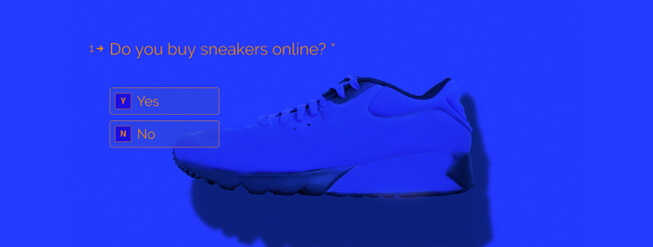

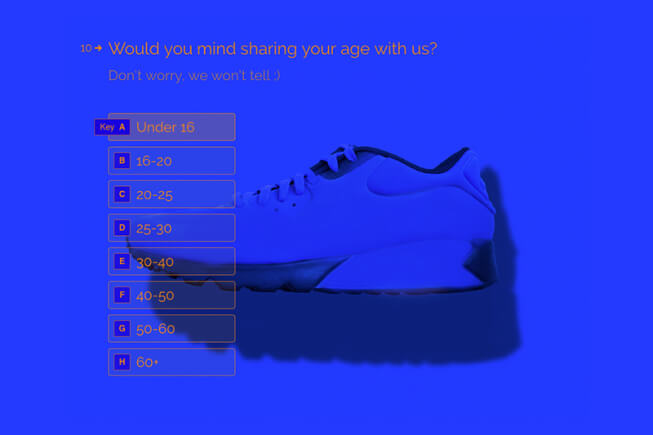
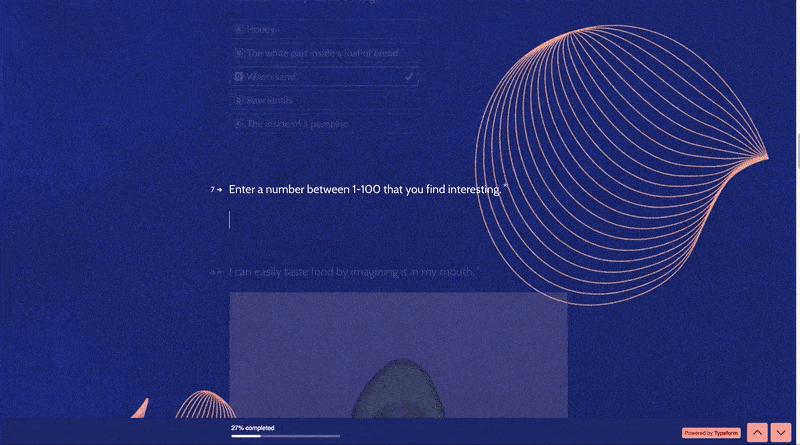

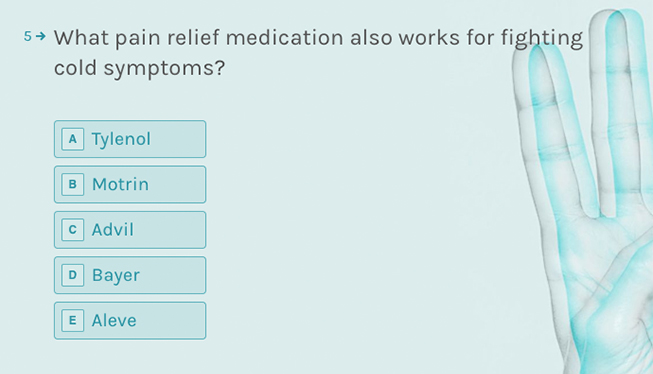

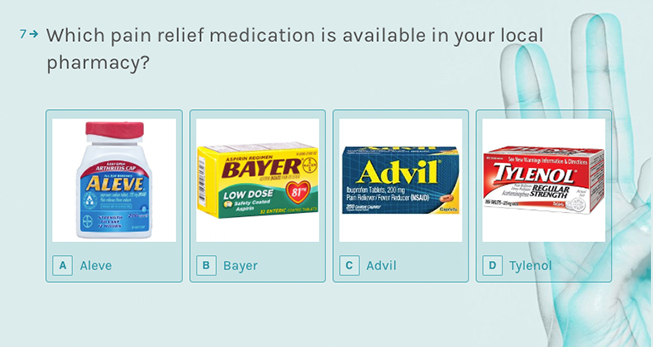


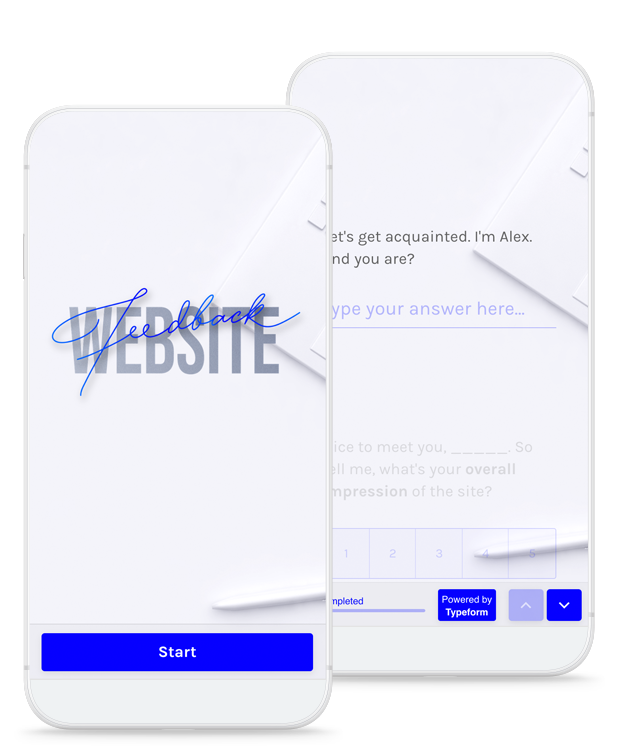


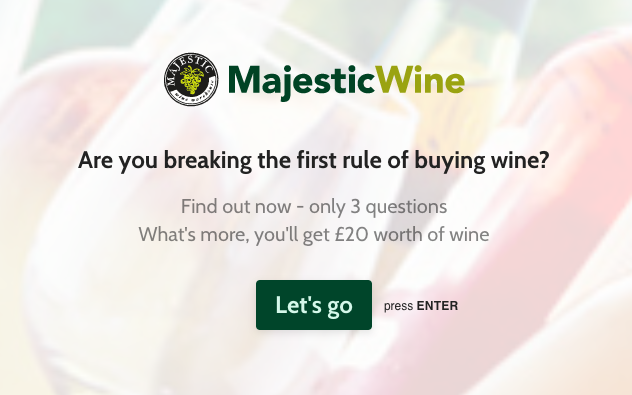

.png)

